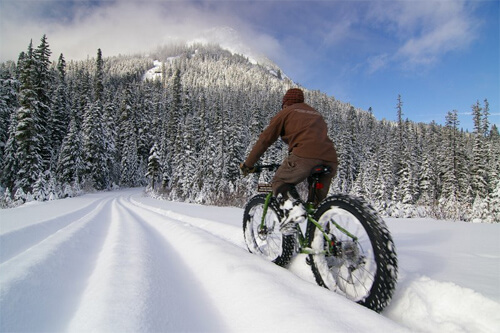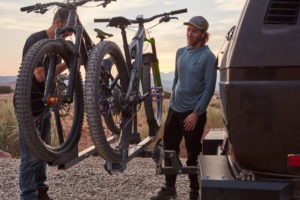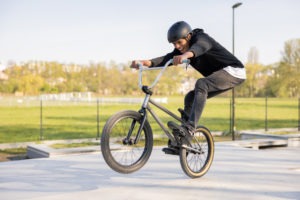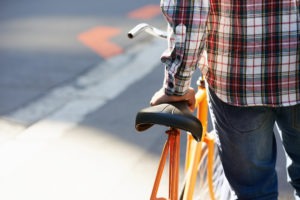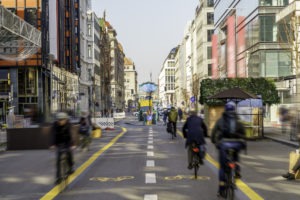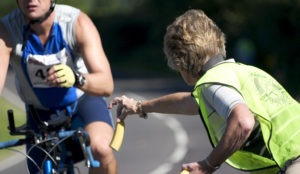
It was 1987 when when Dan Bull from Anchorage, Alaska, came up with the idea of holding a bike race along the Iditaroid dog sled trail. Well, perhaps other die hard mountain bikes had attempted riding their favorite trails in the snow. Like snowshoeing did in the early 90’s, snow biking is starting to boom. Trails across northern climates are now seeing more bikers on the same trails as snowshoes and snowmobilers. Snow bike are also called Fat Bikes. 
Ski area access roads, old mining roads and snowmobile trails are ideal for riding. Cross-country ski trails might look fun, but if you try to pedal in more than four or five inches of powder with your standard wheels, you’ll sink in like you are standing in quicksand. Hardpack is best and packed powder is good, too. Packed hardpack with a few inches of powder is like riding on top of the clouds. Areas like Vermont (Kindgom Trails), Washington State (Methow Trails) and Wyoming (Grand Targhee Trails) have snow bike only trails.
The key to riding in the snow is flotation and slow, steady movements. Maintain a slow and steady rhythm, ride at a slightly lower cadence and higher gear than you normally would. Do not jump too hard out of the saddle when you need to accelerate. Steer with smooth and wide turns, and if the bike wants to slip in on one direction, then let it. You can only be as aggressive as the trail surface allows—and in snow, that usually means you’re not going to be jumping up to sprint, standing to hammer up climbs, or generally thrashing around. Basinger’s advice: Shift into a gear that lets you keep a comfortably high cadence, take a seat, and spin down the trail.
Snow bike enthusiasts agree that it’s more interesting and can be more fun than riding on the dirt. Beware though, riding in the snow is hard and technical, and rewarding at the same time. Ten miles in the snow is like 20 miles on a dirt trail!
The sweet spot is where the conditions are perfect for floating. Be ready to do some wandering to find the sweet spot. Not all trails will ideal from start to finish. In less than ideal conditions, you can play with the way you distribute your weight – if the snow’s crusty, shift more weight to the front so you can stay on the crust without breaking through. If it’s mushy, shift to the back so you can get some traction. Experiment, have fun and be grateful for winter!
